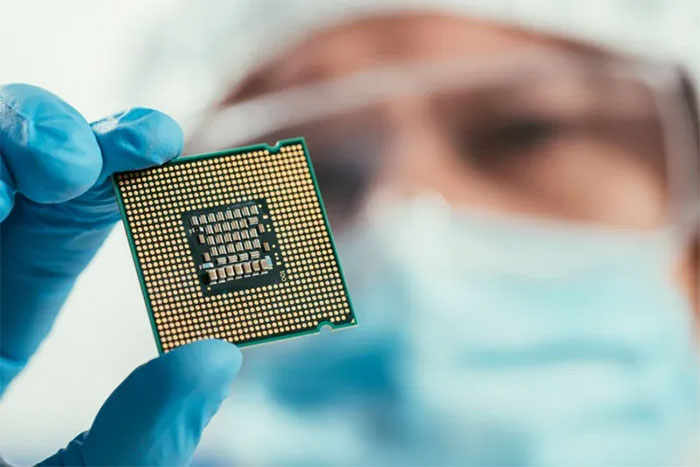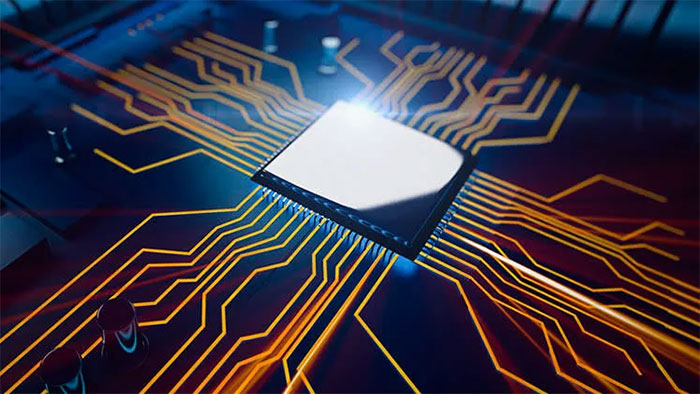Engineers at Penn State University have developed a chip capable of processing and classifying nearly 2 billion images per second. Penn Engineering Today confirms that a team of researchers, including Farshid Ashtiani, Alexander J. Geers, and Firooz Aflatouni, has successfully created this chip, which occupies less than 1 square centimeter.
This chip can classify entire images in about half a nanosecond without the need for a separate processor or memory.
In traditional AI systems used for image recognition, images of the target object are first captured by an image sensor, such as a digital camera in a smartphone. The image sensor then converts light into electrical signals and ultimately into binary data. Only then can the system sufficiently “understand” the image to process, analyze, store, and classify it through a computer chip.
 This chip occupies less than 1 square centimeter.
This chip occupies less than 1 square centimeter.
Although today’s digital chips can perform billions of calculations per second, classifying more complex images, such as identifying moving objects or recognizing 3D objects, is pushing the limits of even the most powerful technologies.
The current speed limits of these technologies are set by the clock cycle schedule of computational steps in the computer processor, where calculations occur sequentially in a linear schedule.
Penn State engineers have created the first scalable chip that enables near-instantaneous image classification and recognition by designing a solution that eliminates the most time-consuming aspects of the image processing involved in traditional chip-based AI.
Their custom 9.3 square millimeter processor directly processes light received from the “object of interest” using what they call a “deep optical neural network.”
The researchers’ processor effectively utilizes “optical neurons” interconnected by optical fibers, also known as waveguides, to form a deep network with multiple layers.
Thanks to the chip’s computational ability as light passes through it to directly read and process optical signals, the researchers claim that this chip does not require information storage and can classify entire images in about half a nanosecond.
 This chip does not require information storage and can classify entire images in half a nanosecond.
This chip does not require information storage and can classify entire images in half a nanosecond.
Geers stated, “We are not the first to conceive of technology that reads optical signals directly, but we are the first to create a complete system on a chip that is compatible with existing technology and can be scaled to work with more complex data.”
The research team expects that this chip will be applied in automatically detecting text in images, helping self-driving cars recognize obstacles, and other computer vision tasks.
AI has been changing the camera technology landscape in recent months. Earlier this year, scientists developed an AI camera capable of capturing full-color images entirely in the dark.
This week, Camero-Tech announced their latest AI-supported recognition system, named Xaver 1000, which allows soldiers to see through walls before attacking.


















































